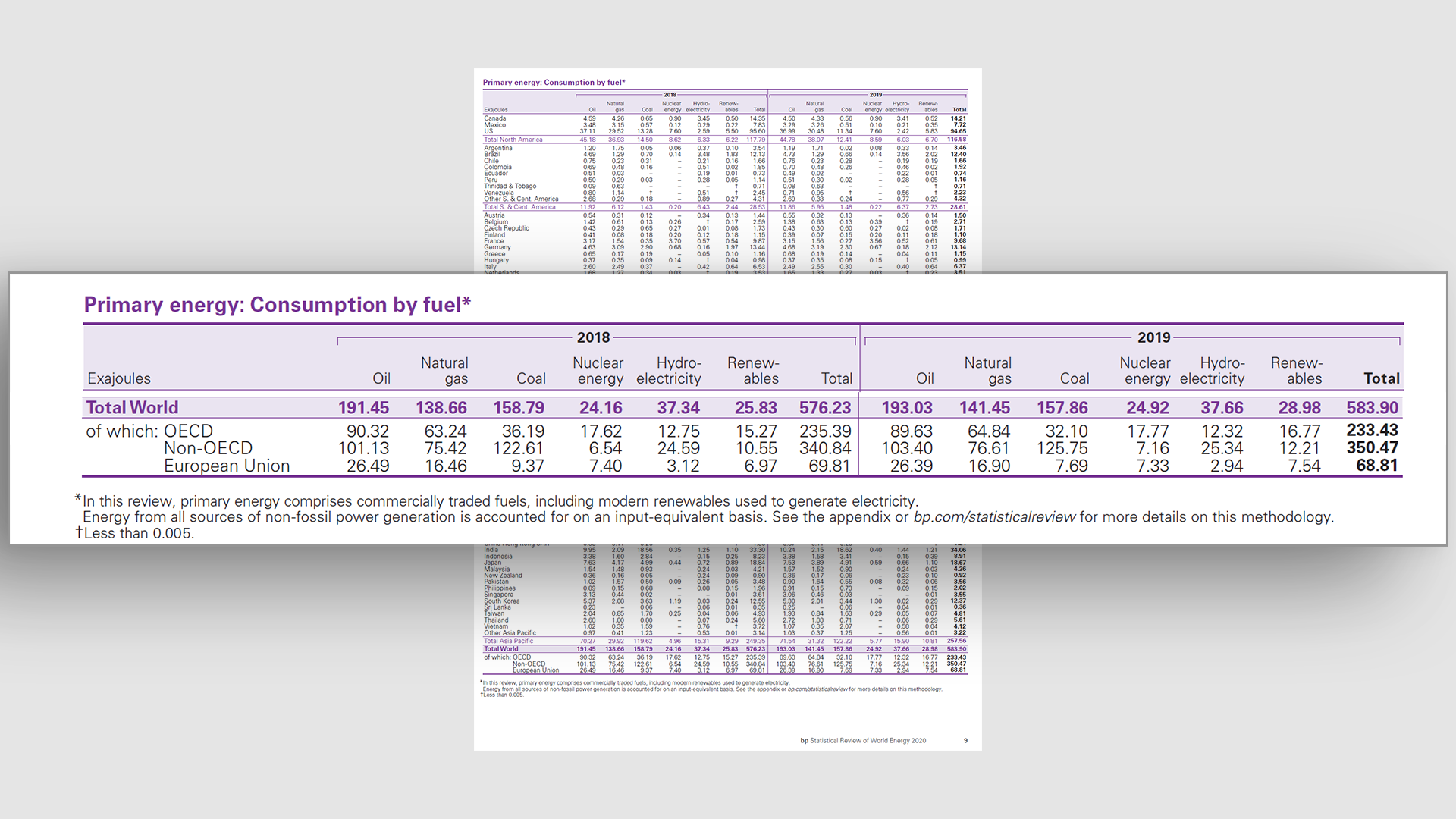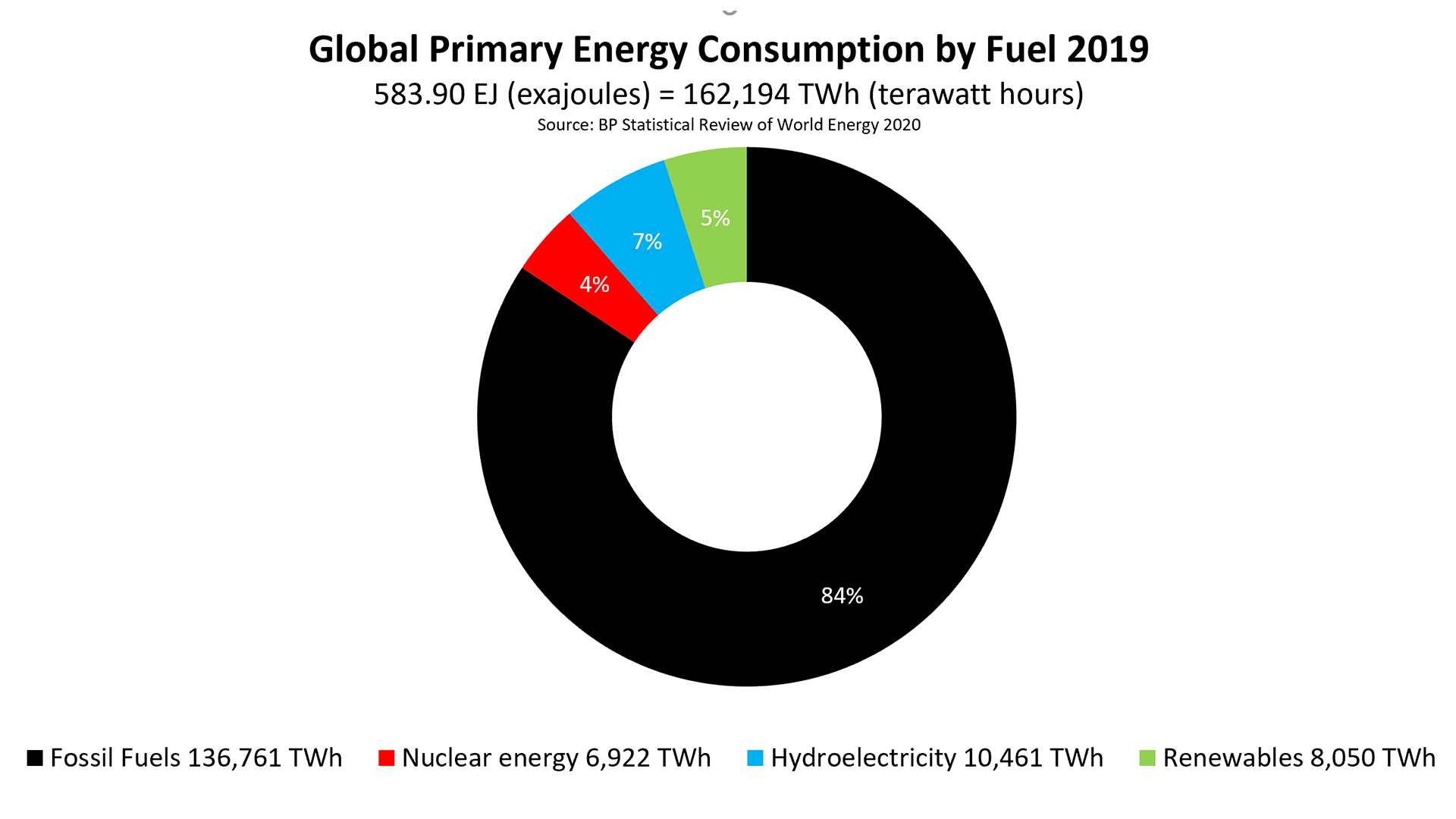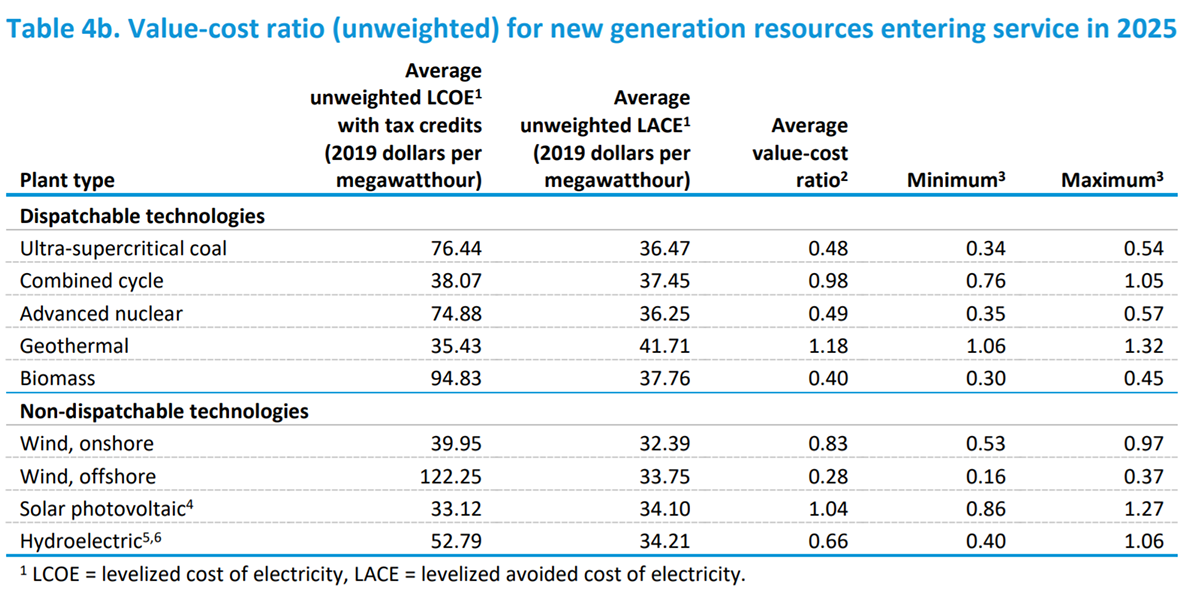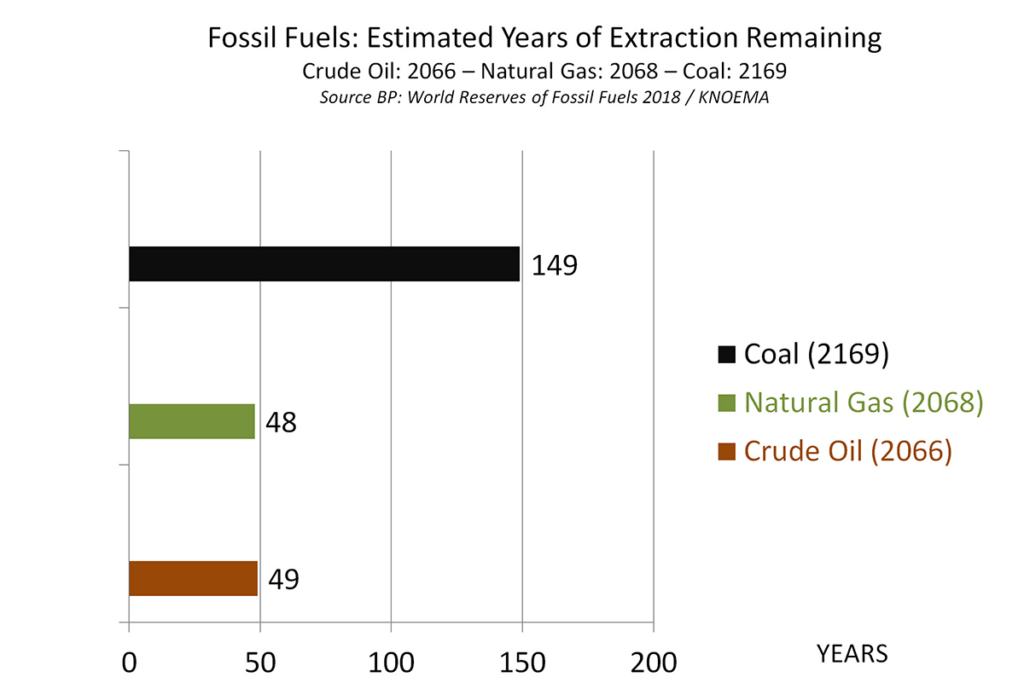Addressing the Energy Dilemma

There are several sources of energy data available in order to have a picture of the world energy demands now and in the future. One commonly used is the BP Statistical Review of World Energy 2020 which in its 69th edition. This energy review lists World Primary Energy Consumption by fuel, i.e. oil, natural gas, coal, nuclear energy, hydroelectricity and renewables by region and country. [1] For 2019, Fig.1 shows the World Total Primary Energy consumption was: 583.90 EJ, combined Fossil Fuels coal, natural gas and oil: 492.34 EJ (Coal 157.86 EJ, Natural Gas 141.45 EJ Oil 193.03 EJ), Hydroelectricity: 37.66 Nuclear: 24.92 EJ, Renewables (wind, terrestrial solar and other non-hydro renewables) 28.98 EJ.

Fig.1. Extract from BP Statistical Review of World Energy
The BP report listed these in totals in exajoules (EJ) . When converted to terawatt hours (TWh) equals: Total world energy consumption: 162,194 TWh; Fossil Fuels: 136,761 TWh (84.3%); Hydroelectricity, 10,461 TWh (6.5%); Nuclear power, 6,922 TWh (4.3%); and 8,050 TWh (5%) from renewables as illustrated in Fig. 2. This estimate of world energy consumption is confirmed by other sources such as the International Energy Agency [2] and Our World in Data.

Fig. 2. Global Primary Energy Consumption by Fuel in Terawatts
Replacing Fossil Fuels with Terrestrial Energy Alternatives
Using nuclear power as an example, in order to replace current fossil fuel usage of 136,761 TWh with nuclear power (assuming a 90% availability) would require the deployment of up to 17,347 new 1 GW nuclear reactors. This means, for the next 30 years, 578 nuclear power plants would have to go online each year. In 2019, world-wide nuclear power systems accounted for only 6,922 TWh (4% of the total energy use) and, currently, building one nuclear power plant takes about 10 years. Furthermore, some estimates conclude that the uranium reserves may supply the currently-operating reactors only for some 90 years more. However, there would not be enough suitable locations providing sufficient cooling for many more nuclear plants even if these could be built. Accordingly, a nuclear solution to divest from fossil fuels seems highly unlikely. [4]
Terrestrial fusion nuclear power has been under development for more than 50 years. Among the dozen or so fusion projects around the world, the largest effort is the International Thermonuclear Experimental Reactor (ITER) which is a 35 nation effort under development since 1985 that hopes to have a commercially viable reactor by the year 2050. ITER’s first plasma reactor demonstration experiment that should produce a net energy gain of 500 MW from 50 MW of input heating power is scheduled for 2025. From the ITER website: “The ITER Tokamak and plant auxiliary systems will produce an average of 500 MW of heat during a typical plasma pulse cycle, with a peak of more than 1100 MW during the plasma burn phase; all of this heat needs to be dissipated to the environment”. [5] Thus, in addition to requiring geologically stable locations with sufficient access to cooling water where the substantial waste heat can be discharged into the local environment, scalable deployment of nuclear fusion faces the same obstacles as nuclear fission (17,347 new 1-GW reactors by the year 2050). Thus nuclear fusion is also not a near term energy option.
Wind and solar photovoltaic (PV) generators have significantly lower availability: the inherent intermittency and storage aspects, make it necessary to deploy multiples of their equivalent rated (peak) power levels to equal the output, e.g., of nuclear power systems. For wind, the generating capacity needs to be some 3.35 times higher [6] and for PV, 6-7 times higher. Thus, to replace 2018 use of fossil fuels with wind and solar, no less than 65 TW (depending on the assumed wind/ PV mix) of power generating capacity from these two renewable sources would need to be installed. Again, this translates into 2 TW of electrical generating capacity from wind and solar to be installed every year from now until the year 2050 – i.e., 5 GW per day – and this, too, would have to start immediately.
Published data shows that the world’s installed wind power capacity reached 597 GW in 2018. [7] Installed world terrestrial solar PV capacity was 401 GW in 2017 [8] and is predicted to reach 530 GW by 2024. [9] Thus, nuclear, wind, ground solar and other non-hydro renewables combined, contributed about 1.6 TW of current level of world energy consumption or approximately 8%.
With current world population of 7.7 billion expected to increase by 25% to 9.7 billion between now and 2050, at current energy consumption levels a very minimum of 23 TW (+25%) of power will be necessary to sustain civilization. However, based on the current average energy consumption increase of 1.5% per year, [10] more likely humanity will require more than 30 TW of continuous power by mid-century.
In his assessment of the U.S. energy needs in the year 2100, Michael Snead has reached a similar conclusion concerning the lack of scalability of terrestrial energy alternatives in his book Astroelectricity (2019) and on his Spacefaring Institute YouTube channel. [11]
Environmental Issues of Terrestrial Energy Alternatives
The major unresolved environmental problem associate with nuclear power generation is the creation of radioactive wastes such as uranium mill tailings, spent (used) reactor fuel, and other radioactive wastes.[12] Sufficient cooling is also an issue as is the decommissioning process. These issues are in addition to the proliferation of nuclear weapons technology. [13]
With regards to wind, while most elements of a wind turbine can be recycled or recommissioned, researchers estimate that over the next 20 years, the U.S. will have more than 720,000 tons of blade material which is a mix of resin and fiberglass to dispose of, a figure that doesn’t include newer, taller higher-capacity versions. As these used turbine blades do not have much value as scrap material, there is little commercial interest from recyclers. [14] [15] Other issues include unreliable and intermittent power generation, weather sensitivity, a lack of energy storage, land use, 20-25 year lifetime, low frequency amplitude modulation which is a problem for people living nearby, and the environmental impact on birds, bats and insects.
Likewise, terrestrial solar power generation is also unreliable and intermittent, energy efficiency is less than 25%, has the same energy storage issue as wind, is subject to dust and rain, the photovoltaic e manufacturing process uses toxic materials, extensive land use, waste disposal and recycling issues, and last, but not least, the thermal burden which dissipated excess heat is added to the environment.
The International Renewable Energy Agency (IRENA) estimated there was about 250,000 metric tonnes of solar panel waste in the world at the end of 2016. They predicted that this amount could reach 78 million metric tonnes by 2050. [16] [17] While solar generation is considered CO2-free, the manufacture of solar panels and related technologies can involve some environmentally unfriendly substances. Nitrogen trifluoride is a common byproduct of electronics manufacture; including those used in solar photovoltaics, and it is a greenhouse gas 17,000 times more potent than carbon dioxide. In addition, many photovoltaics include small amounts of the toxic metal cadmium, and the batteries required to store generated electricity can contain a host of other heavy metals and dangerous substances. [18]
Each of these terrestrial energy alternatives has various unresolved and specific environmental impact issues which are often overlooked when these are promoted as “green” solutions to humanity’s energy dilemma.
Economic Issues of Terrestrial Energy Alternatives
A stated above, 17,530 new 1-GW nuclear reactors would be necessary to replace current fossil fuel use. To do this by year 2050, averagely 572 new 1-GW reactors would have to go on line each year or 1.5 reactors each day. At a cost of $5 billion per 1-GW facility, the basic construction cost of these would be approximately $3 trillion per year or $87 trillion over a 30 year period. These estimates are probably underestimated as seen in the two examples below of nuclear power plants currently under construction.
- Hinkley Point C nuclear power station – a 3.2 GW facility in Great Britain that is expected to eventually cost £22.5 billion ($29 billion) [19]
- Flamanville in Manche, France begun in 2007 – 1.6 GW facility is now expected to eventually cost €12.4 billion ($14 billion) [20]
At $10 billion per 1-GW nuclear power plant the above construction cost estimate doubles to $179 trillion. Not included in this estimate are the costs of financing, cost of fuel, nuclear waste disposal, regulations, operations and decommissioning which would further significantly impact this cost.
With government initiatives, policies, subsidies and mass-production factors, the reported cost of building wind and solar electrical generation plants is now considered comparable to that of building new coal or nuclear capacity. Of course, when these governmental factors expire or are removed then the real costs of the competing energy technologies may be realistically compared.
There is a complex method proposed by the US Energy Information Administration (EIA) to make these comparisons. Referred to as the levelized cost of electricity (LCOE) and levelized avoided cost of electricity (LACE) these are, respectively, estimates of the revenue required to build and operate a generator over a specified cost recovery period and the revenue available to that generator over the same period. The LCOE / LACE comparisons in Fig. 3. are from their publication Levelized Cost and Levelized Avoided Cost of New Generation Resources in the Annual Energy Outlook 2020. [21]

Fig 3. Levelized Cost and Levelized Avoided Cost of New Generation Resources
Source: U.S. Energy Information Administration (EIA) February 2020.
Market shocks may cause a divergence between LCOE and LACE and therefore disturb the market equilibrium. These market shocks include technology change, policy developments, fuel price volatility, geopolitical conflicts, or, as experienced in 2020, a global health pandemic, that can increase or decrease the value-cost ratio of any given technology.
However, even if one accepts that the cost terrestrial renewable energy production has now reached parity with coal and nuclear power production, an increase in energy demand from 2020 to 2050 must also be taken into account. World population is expected to increase to 9.7 billion by 2050. Under present economic circumstances, an accompanying 25% increase in energy demand can be expected at a minimum. The EIA projects nearly 50% increase in world energy use by 2050. [22]
These economic considerations add to the problem of scaling terrestrial energy options to meet the energy needs of humanity while concurrently divesting from fossil fuels.
Fossil Fuels are Critically Finite
In addition to the many environmental and geopolitical issues associated with the continued use of fossil carbon fuels, the limited nature of these resources needs consideration. For instance, in Fig. 4 the “BP: World Reserves of Fossil Fuel” report shows that the remaining proven extractable reserves of fossil fuels are critically finite. At current rates of consumption, humanity will exhaust said reserves of crude oil by the year 2066, natural gas by 2068 and coal by 2169. [23] Furthermore, EROI – energy return on investment – is also a critical issue for future production predictions as this will influence the price of fossil fuels as they become more difficult and thus less economical to produce. This aspect also significantly adds to the urgency of finding a viable alternative energy solution and underscores the imminent Energy Dilemma that humanity is facing.

Fig 4. Estimated years of extraction remaining for fossil fuels.
Humanity is facing an imminent Energy Dilemma which, in addition to the Climate Emergency, deserves the focus of world attention. As energy is the key element, the solutions to solving both of these issues are interrelated and interconnected. Addressing the Energy Dilemma will require massive amounts of clean energy production for restoring the environment and meeting the energy needs of a growing population. Addressing the Climate Emergency will require massive amounts of clean energy production to adapt and survive a severe warming or cooling situation.
The above calculations indicate that none of the alternative terrestrial energy options – nuclear, wind and ground solar (PV) – can be sufficiently scaled to achieve the goal of divesting from fossil fuels and achieve net-zero CO2 levels by the year 2050 as is being called for by the United Nations, many governments and numerous organizations. The Space Energy Options represents the only near term technically feasible alternatives to addressing these two critical energy related issues.
References
- BP Statistical Review of World Energy, 2019 https://www.bp.com/content/dam/bp/business-sites/en/global/corporate/pdfs/energy-economics/statistical-review/bp-stats-review-2019-full-report.pdf Accessed 10.3.2020
- IEA, World Energy Report 2019, Launch Presentation, Page 4, https://www.iea.org/media/publications/weo/WEO2019-Launch-Presentation.PDF (N/A) https://thespaceoption.com/PDF/IEA-World_Energy_Outlook_2019_Launch_Presentation.pdf
- Nuclear Power, William Martin, Encyclopedia Britannica, https://www.britannica.com/technology/nuclear-power#ref1177714 Accessed 10.3.2020
- Supply of Uranium, World Nuclear Association, August 2019
https://www.world-nuclear.org/information-library/nuclear-fuel-cycle/uranium-resources/supply-of-uranium.aspx Accessed 10.3.2020 - ITER website, Cooling Water System, https://www.iter.org/mach/CoolingWater Accessed 12.4.2020
- Land Needs for Wind, Solar Dwarf Nuclear Plant’s Footprint, Nuclear Energy Institute https://www.nei.org/news/2015/land-needs-for-wind-solar-dwarf-nuclear-plants Accessed 10.3.2020
- Wind Power Capacity Worldwide Reaches 597 GW, 50.1 GW added in 2018, WWEA https://wwindea.org/blog/2019/02/25/wind-power-capacity-worldwide-reaches-600-gw-539-gw-added-in-2018/ Accessed 10.3.2020
- Growth of Photovoltaics, Wikipedia,
https://en.wikipedia.org/wiki/Growth_of_photovoltaics#Worldwide Accessed 10.3.2020 - Renewables 2019, Distributed Solar PV, IEA
https://www.iea.org/reports/renewables-2019/distributed-solar-pv Accessed 10.3.2020 - See BP, [1]
- Michael Snead, (2019) Astroelectricity, Spacefaring Institute LLC & YouTube channel https://www.youtube.com/user/spacefaringinstitute/playlists
- Nuclear explained: Nuclear power and the environment, EIA U.S. Energy Information Administration, https://www.eia.gov/energyexplained/nuclear/nuclear-power-and-the-environment.php Accessed 24.4.2020
- Nuclear proliferation, Encyclopedia Britannica, https://www.britannica.com/topic/nuclear-proliferation Accessed 24.4.2020
- Unfurling The Waste Problem Caused By Wind Energy, NPR, https://www.npr.org/2019/09/10/759376113/unfurling-the-waste-problem-caused-by-wind-energy Accessed 24.4.2020
- Can Wind Turbines Be Recycled?, Earth911, https://earth911.com/business-policy/wind-turbines-recycle/ Accessed 24.4.2020
- If Solar Panels Are So Clean, Why Do They Produce So Much Toxic Waste?, Forbes, https://www.forbes.com/sites/michaelshellenberger/2018/05/23/if-solar-panels-are-so-clean-why-do-they-produce-so-much-toxic-waste/#3c2bebf1121c Accessed 24.4.2020
- End-of-life management: Solar Photovoltaic Panels, IRENA, https://www.irena.org/publications/2016/Jun/End-of-life-management-Solar-Photovoltaic-Panels Accessed 24.4.2020
- Future of Solar Power: Obstacles & Problems, Sciencing.com, https://sciencing.com/future-solar-power-obstacles-problems-21852.html Accessed 24.4.2020
- Hinkley Point nuclear plant building costs rise by up to £2.9bn
https://www.theguardian.com/uk-news/2019/sep/25/hinkley-point-nuclear-plant-to-run-29m-over-budget Accessed 24.5.2020 - EDF warns of added costs of Flamanville EPR weld repairs. World Nuclear News, http://world-nuclear-news.org/Articles/EDF-warns-of-added-costs-of-Flamanville-EPR-weld-r Accessed 24.5.2020
- Levelized Cost and Levelized Avoided Cost of New Generation Resources in the Annual Energy Outlook 2020, EIA, U.S. Energy Information Administration
https://www.eia.gov/outlooks/aeo/pdf/electricity_generation.pdf Accessed 24.5.2020 - EIA projects nearly 50% increase in world energy usage by 2050, led by growth in Asia, EIA, U.S. Energy Information Administration https://www.eia.gov/todayinenergy/detail.php?id=41433 Accessed 24.5.2020
- BP: World Reserves of Fossil Fuels, 2018 Knoema Data Published: 30 July 2018 https://knoema.com/infographics/smsfgud/bp-world-reserves-of-fossil-fuels
Accessed 10.3.2020
